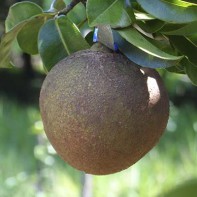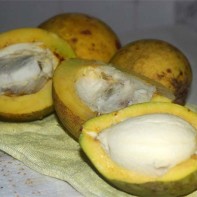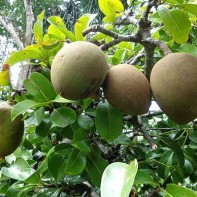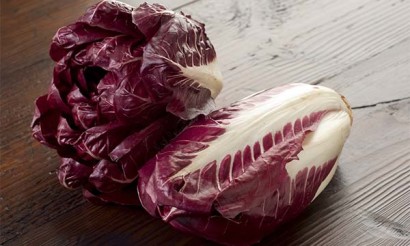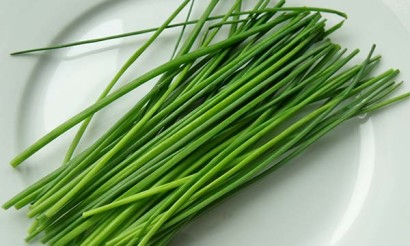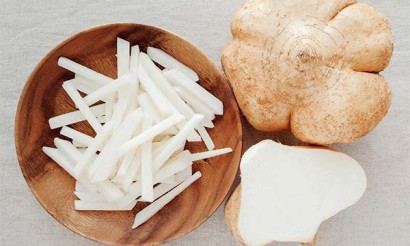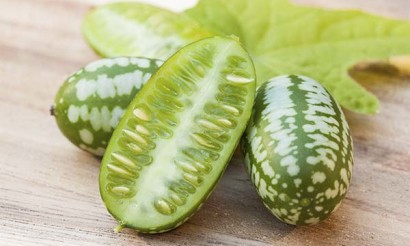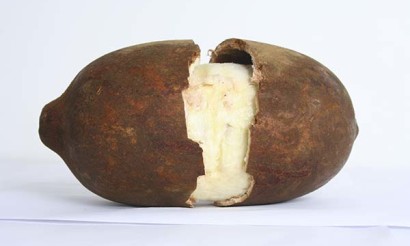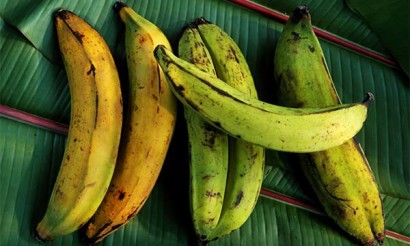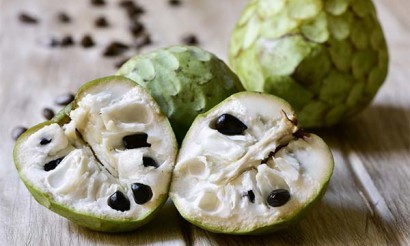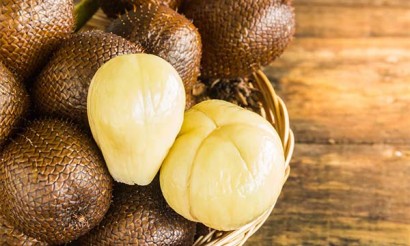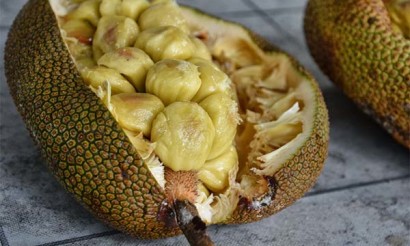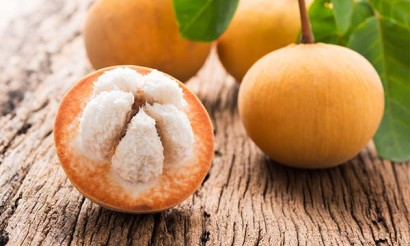Platonia: what is this fruit and why is it useful?
You can enjoy the fresh fruit of the platonia only if you come to South America in the period of its ripening and harvesting. This fruit spoils quickly, so transportation over long distances is impossible.
- What this fruit is.
- What it looks like
- Where it grows
- What is the usefulness of the platonia fruit
- What harm it can do
- How to eat platonia
- What can be made with platonia
- Brazilian Style Lemonade
- Cupcake with carrots and platonia fruits in the multicooker
- Bakuri with chocolate
- Dessert from platonia
- Mousse from platonia fruits
- Bisque with bakuri
- Traditional Medicine
- Cosmetic use
- How to grow
Fruits grow on the homonymous deciduous trees, reaching a height of 20-30 meters, belonging to the family Clusiaceae. It blooms in beautiful large pink flowers.
Even in pre-Columbian times, the aborigines noticed not only the pleasant taste of the fruit, but also its benefits. The local names of the fruit are bacuriziro, maniballi, naranjillo, and various variations from bacuri.
What is this fruit.
Platonia remarkable does not have that name for nothing. Its unique sour-sweet taste is impossible to forget if you try the fresh fruit at least once in your life. But since the fruit begins to spoil 5-7 days after harvest, you will most often find it in confectionery and culinary products.
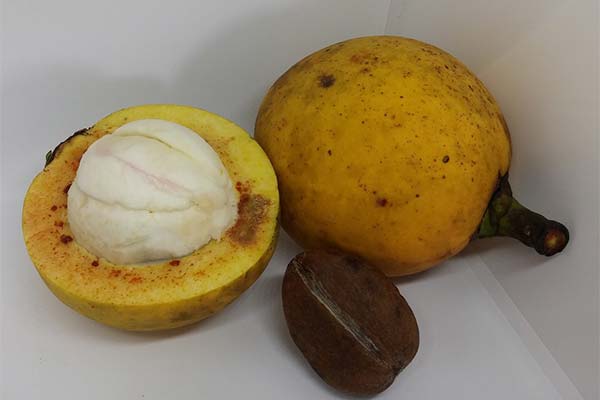
What does it look like
Platonia fruits are round or oval, on average 7-10 cm in diameter. Especially large ones reach 15 cm. Their appearance resembles that of a papaya. Thick and fleshy yellowish-brown peel reliably protects the core of the fruit. For this reason, even fruits that have fallen from the tree are considered edible if they have no external injuries.
The edible white flesh contains large dark colored seeds. As a rule, their number does not exceed four.
If you squeeze a mature platonia in your hands, a yellowish sap will ooze out of it.
Where does it grow
In the wild, Platonia remarkable trees are found in the tropical rainforests of South America. They prefer open terrain well heated by the sun.
The plant is cultivated only in Brazil, but it does not play a significant role in the economy of the country, as it is not exported in fresh form.
The Spanish conquistadors, having tasted the amazing taste of platonia, tried to bring it to Europe. They were attracted by the fruitfulness of the trees - 350-400 fruits per year on average, and by their unpretentiousness to the soil. But the venture turned out to be a failure. It turned out that natural flower pollination occurs only with the help of yellow-headed white-bellied parrots that feed on the nectar of the platonia. And artificial takes a lot of time and effort, so there is no noticeable profit. Therefore, it is grown only by lovers of exotics for decorative purposes.
What is the usefulness of the platonia fruit
The benefits of consuming the fruit of the platonia have long been noticed by the Indians living in the territory of the growing of these trees. The fruit contains:
- Minerals (calcium, phosphorus, iron);
- vitamins (B, niacin, ascorbic acid);
- Amino acids (lysine, methionine, threonine, tryptophan).
Modern medicine advises eating fresh platonia:
- For anemia, including iron deficiency.
- With increased irritability, or, on the contrary, with depression, chronic fatigue syndrome.
- In case of vegetovascular dystonia.
- When there is a change in taste caused by a disease.
- In disorders of the gastrointestinal tract, constipation, flatulence.
- When reducing the concentration, poor memory.
- With reduced immunity, a tendency to colds.
- With thyroid dysfunction.
- With rickets.
- In a lack of vitamins that affect hair and nails.
From the seeds of the fruit is produced oil, popular among local folk healers. It is also widely used for cosmetic procedures.
It is noted low caloric content of the fruit - only 39 kcal per 100 grams. This makes it possible to include it in a diet for weight loss.
What can bring harm
Trying the exotic fruit for the first time, you need to be careful, and eat only a small amount. This will help the body gradually get used to the exotic product.
Platonia grows in environmentally friendly areas, so it is absolutely safe for health. The only contraindication is an individual intolerance. If there is such a problem, you can not only eat the fruit in its fresh form, but also consume products in the preparation of which it is used. It is also worth refusing cosmetics, based on which is the oil of Platonia.
Another feature of this unusual fruit is its ability to slow the action of some drugs. Therefore, people who take chemical drugs by prescription should refrain from tasting the platonia.
How to eat platonia
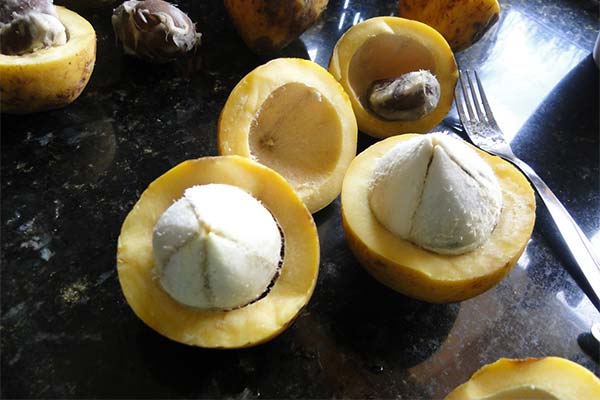
The greatest benefit comes from eating the fruit fresh or in a salad without prior heat treatment. Unfortunately, the period when you can afford this delicacy is very limited. Therefore, in Brazil, the fruit is used in the preparation of marmalade, jelly, sherbet, added to ice cream, pastries, dried it, make marshmallows. Locals use it in mashed potatoes as a complementary food for babies as young as one year old.
To enjoy the refreshing flesh of the fruit, you can cut it in half and eat the core with a spoon.
What you can make with platonia
In Latin American cuisine, there are many recipes with bacurri. In Brazil, an alcoholic beverage based on the platonia fruit is particularly popular.
Brazilian Lemonade
You will need 1/4 cup brown sugar, 2 platonia fruits, 1/4 cup coconut milk, 2 cups water.
Wash the platonia, peel from the skin and grains. Place all ingredients in a blender and blend until smooth. Strain, put in a glass with ice, garnish with a slice of lemon and you are ready to serve.
Cake with carrots and platonia in the multicooker
To prepare this dish you need to prepare wheat flour - 250 g, corn oil - 200 ml, 1 fruit of platonia, carrots - 250 g, a packet of baking powder, 4 chicken eggs, a bag of vanillin, a bar of chocolate, granulated sugar - 7 tbsp, salt.
Wash, peel and finely chop the carrots. Platonia peel from the skin, remove the seeds and grind with a blender. Beat the eggs with sugar so that it forms a puffy foam. Add to them carrots, platonia, vegetable oil and a pinch of salt. For a homogeneous mass, it is better to use an immersion blender. After that, add flour, baking powder and vanilla and stir again to avoid lumps. Oil the bowl of a multicooker and pour the resulting batter. Cook in baking mode for 60 minutes.
Finished cupcake is decorated with chocolate glaze.
Bakuri with chocolate
Take 1 cup of sugar, 1 liter of water, 0.5 kg. of chocolate, 20 gr. of gelatin and 0.5 kg. of cream for 600 gr. of platonia flesh.
Cool the cream and whip it. Place the bacuri pulp and sugar in the boiling water. Bring the mixture to a creamy consistency over low heat, stirring all the time. Add the gelatine dissolved in the water and remove from the heat. Dissolve the chocolate in a water bath and pour gently into the whipped cream. Then add the cream, stirring gently. Spread it in moulds and leave it to cool. Then keep in a fridge for at least 15 minutes. You can decorate with fruit before serving.
Platonia dessert.
Ingredients: 2 medium bacuri fruits, 6 cups granulated sugar, 0.5 cup mascarpone cheese, 0.5 cup sour cream, 1 can of condensed milk, 4 tsp. any instant coffee, 2.5 tsp. any liqueur, 3/4 cup platonia juice, 3.5 tbsp. powdered cocoa, 3.5 tsp. ground cinnamon, 4 eggs (only whites will be needed).
Recipe: The fruit is washed, peeled from the skin and remove the seeds. Grind the pulp with 4 cups of granulated sugar. Mix sour cream, mascarpone cheese and 0.5 can of condensed milk with a mixer and add to the bacuri with sand.
Heat a glass of water with 0.5 cup of granulated sugar, pour into the ready syrup 0.5 cans of condensed milk, liqueur and bacuri juice. Stirring dissolve the coffee.
Layer baking forms with parchment paper and put the platonia mixture on them, pour the syrup. Bake in an oven heated to 180 ° C for 15-20 minutes.
While the dessert is baking, prepare the cream. To do this, beat the cooled egg whites with 2 cups of granulated sugar.
The finished dessert is decorated with cream and sprinkled with cocoa and cinnamon.
Mousse of fruit platonia
For this dish you will need 1 bag of agar-agar, 3 tbsp. water, 300 gr. peeled bacuri pulp, a can of condensed milk and 1 cup of cream with 33-35% fat content.
Pour agar-agar powder with water and let it stand. Mix all the ingredients thoroughly with a blender until homogeneous. Stir in agar-agar dissolved in water and chill in the refrigerator for 50-60 minutes.
Bacuri Biscuit.
Ingredients: 6 chicken eggs, 1 cup granulated sugar, 2 cups platonia fruit pulp, 0.5 cup whole wheat flour.
Recipe: cooled eggs are beaten with granulated sugar until dense. Bacuri pulp is mixed with a blender with sifted flour, until a fruit puree is obtained. It is gradually added to the egg cream, gently distributing it throughout the mass.
Grease a casserole dish with vegetable oil and sprinkle with flour. Pour the resulting dough and put it in an oven heated to 180 degrees. Baking time is about 20 minutes. Until this time, it is desirable not to open the oven, so that the biscuit does not fall off.
Using in folk medicine
Aborigines long ago learned to use the healing properties of platonia not only to treat people, but also livestock. Bacuri oil, which required a long time to make, was most valued. First, the seeds were soaked for about a year for fermentation. After that, they were boiled and the oily film was collected from the surface of the water. It was used both in its pure form and as a base for medicinal ointments.
- Applied in its pure form for arthritis and rheumatism, it can reduce pain. However, the effect is temporary and does not cure the cause of the disease.
- It promotes faster healing of wounds.
- It can soften scars on the skin and noticeably reduce scars.
- Pregnant women used to lubricate their abdomen with this product to avoid stretch marks.
- The smell of Platonia oil was used for incense at the bedside of the sick. It was believed to give a healing sleep and relieve fever. It is still used in aroma lamps as a soothing agent.
- For earaches, snake bites and poisonous insects, shamans also used it.
- The oil of Platonicum seeds was used to make remedies for various skin infections.
Many of the secrets of ancient healers have already been lost. According to legends, the fruits of bacurus were part of potions that could cure fatal ailments.
Modern research confirms the therapeutic properties of the plant. The lysine rich in this fruit has an antiseptic effect and aids in the production of collagen and elastin. Phosphorus and calcium strengthen bone tissue.
Cosmetic applications
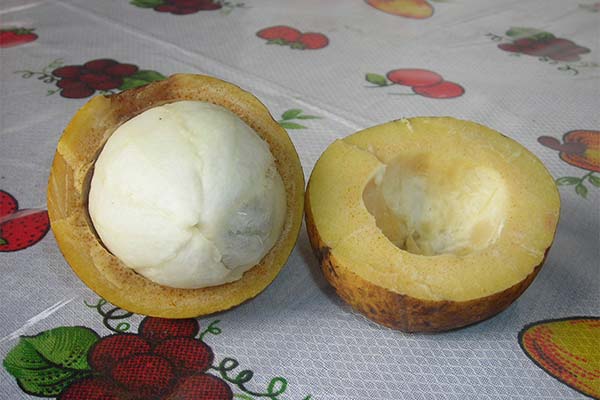
At present, the oil from the seeds is obtained by pressing, and is widely used in cosmetology. High in trypalmitin, creams made with Platonia are quickly absorbed, penetrating deeply into the epidermis. They saturate skin cells and tissues with water, returning them to freshness and tone. This property allows its use in sunscreens. At the same time, the skin takes on a slightly golden hue.
Regular use of skin care cosmetics with the addition of bakuri oil allows the skin to retain its elasticity. It eliminates minor cosmetic imperfections: it removes acne scars, narrows enlarged pores, lightens pigment spots.
For the care of weakened hair is recommended to add the oil in shampoo or balm. Masks made from the pulp of fresh fruits also give a good effect.
In its pure form, the oil is used to strengthen the nail plates. The methionine and sulfur it contains help with thinning, brittleness and concavity.
How to grow
Growing a platonia remarkable tree in the northern hemisphere is quite difficult. It needs lots of sun and high humidity. Moreover, bacuri grows fast enough and in five to six years will exceed 10 meters. But the plant does not tolerate prolonged sub-zero temperatures.
Platonia seeds retain their germination for only 30 days after maturation. Therefore, you should buy them online with great caution. It is better to try to grow a tree from a seedling.
«Important: All information on this site is provided for informational purposes only. purposes only. Consult with a specialist before applying any recommendations. specialist before applying any recommendations. Neither the editors nor the authors shall be liable for any possible harm caused by materials."


